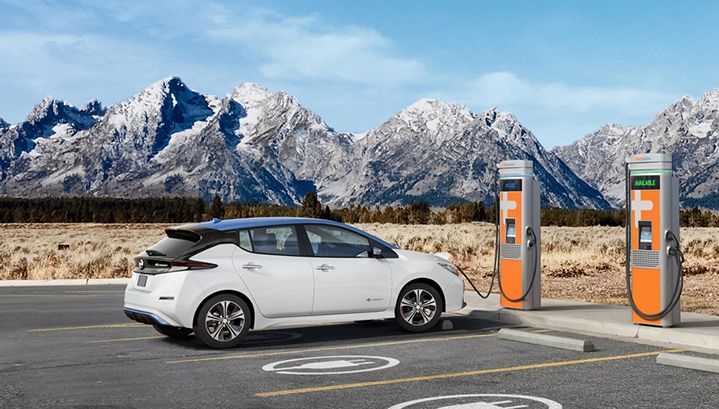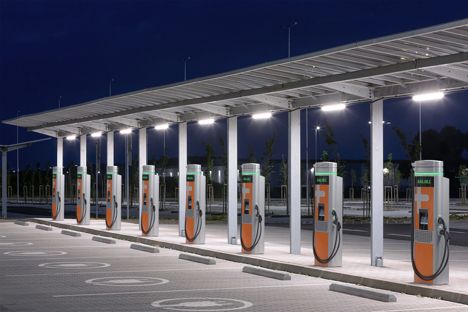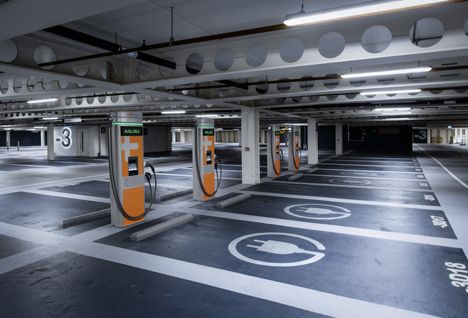
The Electric Mobility Revolution Is Upon Us

The Electric Mobility Revolution Is Upon Us
By Suzanne Goldberg
If you haven’t already noticed, an array of electric car models have hit the roads in just the last few years with many more to come over the next decade. Construction is underway every day to build out electric vehicle (EV) charging around Canada in front of municipal buildings and in retail parking lots, while more goods and people are being transported with electric power than ever before. The era of electric mobility is not coming, it’s here. According to a 2019 Electric Mobility Canada report, EV sales reached 16,091 in the third quarter of 2019. The year before, in the same quarter, sales reached 12,902. On average, EV sales have increased by more than 60 per cent each year for the previous five years. With this kind of consistent annual growth, infrastructure is a critical piece of balancing mass EV adoption. Now is the time for businesses, retailers, employers, real estate developers, fleets and so many more to take advantage of a country-wide shift that is growing more relevant with each passing day; and it’s here to stay.

So, what is electric mobility and why should you consider it a new way of fueling your vehicle? Electric mobility is the operation of transportation modes which either emit zero tailpipe greenhouse gas (GHG) emissions, powered fully by electricity or modes that emit a reduced amount of emissions through hybrid and plug-in hybrid configurations. Some drivers, businesses and fleets have made the decision to switch to electric because it’s more economical for the driver or fleet manager and helps reduce GHG emissions while simultaneously improving air quality.
Companies like ChargePoint are enabling long distance electric travel across cities, provinces, states, and countries alike. With more than 11,700 places to charge in Canada, drivers are able to charge any kind of EV on the road today. Some of the different types of EV charging you will find include:
AC charging, sometimes called level two, which is the best choice for day-to-day charging and adds about 40 kilometers of range per hour (RPH). It’s a great choice anytime you’ll be parked for a few hours while at work, running errands or at home. You will find level two charging stations most commonly at places where you spend your time anyway, at workplaces, retail businesses, municipal parking lots, and residential locations.
DC fast charging, or DCFC, can add range to your car faster and is often used along major long-distance routes. Using ChargePoint’s DC fast charging stations is as easy as using public AC stations. While fast charging doesn’t replace AC charging, it’s a great option for when you are short on time or traveling long distances.
Charging behaviors show that most drivers juice up their EVs at home or at work, where they spend most of their time. Home chargers, like the ChargePoint Home Flex, allow drivers to charge their vehicles in a faster and more flexible way while at home, with ability to charge up to 50 amps which is nine times faster than a standard wall outlet.
But what does all of this mean for Canada? It is clear that Canada is undergoing an exciting transformation with record sales of EVs and accelerated growth in the deployment of charging across the country. According to the same Electric Mobility Canada report, by the end of the third quarter of 2019, there were 136,000 EVs on the road and this number keeps growing. EV charging infrastructure is scaling with the growth of plug-ins on the road. Much of this adoption has been driven by government policy including, incentives for vehicles and charging infrastructure, EV-ready building requirements, zero emission vehicle (ZEV) supply programs, as well as municipal transit, community and fleet policies.
Some provinces, like British Colombia, Ontario and Quebec, were early adopters and maintain a large scope of the EV charging landscape in and around city centres, but we are seeing gaps in available EV charging in the middle and coastal regions of the country. In the places where EV charging infrastructure has not been adopted or built out quite yet, there is noticeable anxiety around long-distance electric travel among EV drivers, fleets and other entities that are turning to electrification. With agreements that allow EV network roaming with partners like FLO, BC Hydro, and Greenlots, we are making it easier for Canadians to drive an EV coast-to-coast.
The other good news is that the Canadian federal and provincial governments and electric utilities have signed on and are willing and determined to bring the country forward into meeting climate goals and building a better, more sustainable future. The bonus is that implementing EV charging infrastructure helps stimulate the economy by creating jobs at EV charging sites, during installation, construction and more.
Municipalities and private businesses are also beginning to see the benefits of EV charging as well. For municipalities, deploying EV charging lets them lead-by example. Whether it is providing EV charging at critical locations throughout the community for residents, car share or ride hailing, or for their own fleet; municipalities are helping EV drivers and fleets go electric and save money. For private businesses, hosting EV charging onsite and dictating one’s own charging costs and availability invites more drivers to their parking lots. Providing perks like time-limited free charging entices those drivers to spend their time at the place of business while fueling up. And, let’s not forget the various incentives, rebates and recognition a business receives for contributing to national and global sustainability efforts. All-in-all, installing more EV charging stations at more locations across the country creates a healthier planet and more EV drivers, which sounds like a mutually beneficial deal.
The truth is that no major industry will change more over the next two decades than transportation. People are changing the way they travel and the way they transport goods. So, what is the way of the future of fueling and travel, you ask? It’s electric.
Suzanne Goldberg is an energy, climate, and electric vehicle policy professional with over 10 years of experience. She is currently the director of public policy for ChargePoint in Canada, the world’s leading electric vehicle (EV) charging network, with more than 100,000 places to charge on its network around the world. In this role she covers federal, provincial and municipal affairs, managing engagement on electric vehicle policy across Canada. Prior to ChargePoint, Suzanne was the director of research and outreach for START at Simon Fraser University and a founding partner of the consulting firm Navius Research.




































